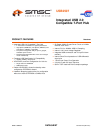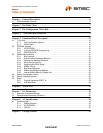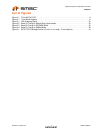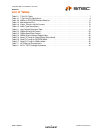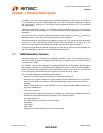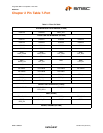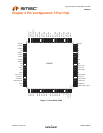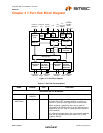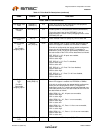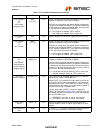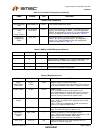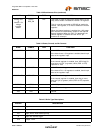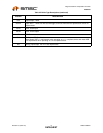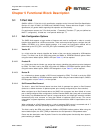
Integrated USB 2.0 Compatible 7-Port Hub
Datasheet
Revision 2.3 (08-27-07) 6 SMSC USB2507
DATASHEET
Chapter 1 General Description
The SMSC 7-Port Hub is fully compliant with the USB 2.0 Specification and will attach to a USB host
as a Full-Speed Hub or as a Full-/High-Speed Hub. The 7-Port Hub supports Low-Speed, Full-Speed,
and High-Speed (if operating as a High-Speed Hub) downstream devices on all of the enabled
downstream ports.
A dedicated Transaction Translator (TT) is available for each downstream facing port. This architecture
ensures maximum USB throughput for each connected device when operating with mixed-speed
peripherals.
The Hub works with an external USB power distribution switch device to control V
BUS
switching to
downstream ports, and to limit current and sense over-current conditions.
All required resistors on the USB ports are integrated into the Hub. This includes all series termination
resistors on D+ and D– pins and all required pull-down and pull-up resistors on D+ and D– pins. The
over-current sense inputs for the downstream facing ports have internal pull-up resistors.
Throughout this document the upstream facing port of the hub will be referred to as the upstream port,
and the downstream facing ports will be called the downstream ports.
1.1 OEM Selectable Features
A default configuration is available in the USB2507 following a reset. This configuration may be
sufficient for some applications. Strapping option pins make it possible to modify a limited sub-set of
the configuration options.
The USB2507 may also be configured by an external EEPROM or a microcontroller. When using the
microcontroller interface, the Hub appears as an SMBus slave device. If the Hub is pin-strapped for
external EEPROM configuration but no external EEPROM is present, then a value of ‘0’ will be written
to all configuration data bit fields (the hub will attach to the host with all ‘0’ values).
The 7-Port Hub supports several OEM selectable features:
Operation as a Self-Powered USB Hub or as a Bus-Powered USB Hub.
Operation as a Dynamic-Powered Hub (Hub operates as a Bus-Powered device if a local power
source is not available and switches to Self-Powered operation when a local power source is
available).
Optional OEM configuration via I2C EEPROM or via the industry standard SMBus interface from
an external SMBus Host.
LED indicator support.
Compound device support (port is permanently hardwired to a downstream USB peripheral device).
Hardware strapping options enable configuration of the following features.
Non-Removable Ports
Port Power Polarity (active high or active low logic)
Port Disable
LED support
MTT enable
Ganged Vs Port power switching and over-current sensing



